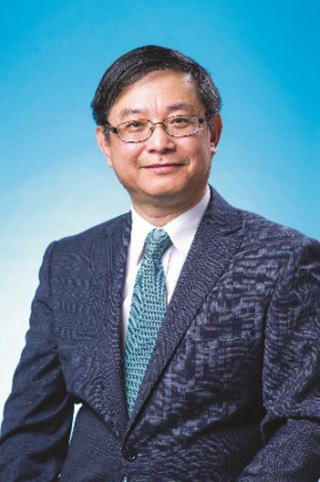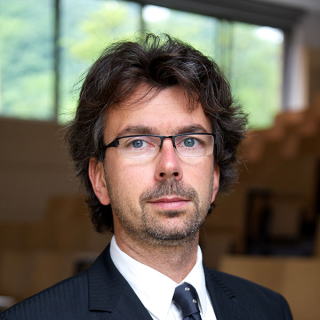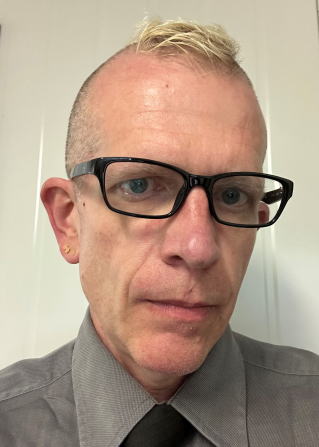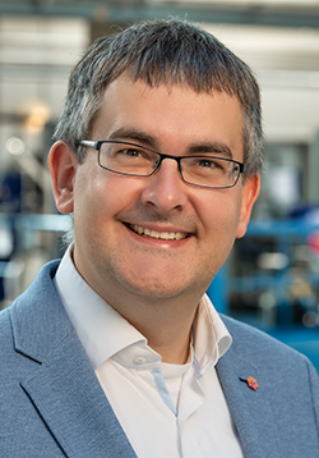TO
Program at a Glance(Update,October,24th,2023)


The schedule and job titles, etc are subject to change.
Final Program
Plenary Lectures
To develop high efficient and advanced energy system, the creation of new materials and associated systems is one of the key directions. This presentation will feature recent development of structural nanomaterials and high performance functional nanomaterials for the potential applications in mechanical and energy systems. The mechanisms of nanomaterials processing with different nano-structures by high efficient physical methods will firstly be reported by illustrating our latest findings / research progress on the nanomaterials with high strength and high ductility, nanostructure materials with gradient structure, hierarchical nano-twinned materials, nanomaterials with multiphase embedded structure and the supra-nanostructured materials. We will also present our recent work on an approach that combines the strengthening benefits of nano-crystallinity with those of amorphization to produce a dual phase material that exhibits near-ideal strength at room temperature and without sample size effects. The feasibility of applying different nanomaterials on various catalysis for splitting water (HER), light-weight vehicle and energy systems such as robotics in challenging environment (nuclear plant), ocean exploration and thermal energy conversion will be discussed. The application of new nanomaterials on the newly designed light-weight automotive parts and the development and research direction of the biomimetic morphing and 3D printed nanostructured materials on advanced aerospace and underwater vehicles systems will be presented.
Reference:
[1] J.C.Ye, J.Lu, C.T.Liu, Q.Wang, Y.Yang, Atomistic Free-Volume Zones and Inelastic Deformation of Metallic-Glasses Characterized by High-Frequency Dynamic Micropillar Tests, Nature Materials, Volume 9, Issue 8, August 2010, pages 619-623.
[2] H.N.Kou, J.Lu, Y.Li, High-Strength and High-Ductility Nanostructured and Amorphous Metallic Materials, Advanced Materials, 2014, 26, p5518–5524
[4] Q.Wang, S.T.Zhang, Y.Yang, Y.D.Dong, C.T.Liu, J.Lu, Unusual fast secondary relaxation in metallic glass, Nature Communications, 24 Jul 2015, DOI: 10.1038/ncomms8876
[5] Y.F.Ye, Q.Wang, J.Lu, C.T.Liu, Y.Yang, High-entropy alloy: challenges and prospects, Materials Today, Volume: 19, Issue: 6, Pages: 349-362, July-August 2016
[6] G.Wu, K.C.Chan, L.L.Zhu, L.G.Sun, J.Lu, Dual-phase nanostructuring as a route to high strength magnesium alloys, Nature, 4th May 2017, Pages:80-83
[7] G.Liu, Y.Zhao, G.Wu, J.Lu, Origami and 4D printing of elastomer-derived ceramic structures, Science Advances, 17 August 2018;4:eaat0641, pp1-10
[8] F.Lyu, S.Zeng, Z.Jia, F.X.Ma, L.G.Sun, L.Cheng, J.Pan, Y.Bao, Z.Mao, Y.Bu, Y.Y.Li, J.Lu, Two-dimensional mineral hydrogel-derived single atoms-anchored heterostructures for ultrastable hydrogen evolution. Nature Communications, 13(1). 21 Oct 2022
[9] F.Q.Hao, B.Wang, X.Wang, T.Tang, Y.Li, Z.B.Yang, J.Lu, Soybean-inspired nanomaterial-based broadband piezoelectric energy harvester with local bistability. Nano Energy, 103, 107823. 1 Dec 2022
[10] S.D.Liu, H.K.Li, J.Zhong, K.Xu, G.Wu, C.Liu, B.B.Zhou, Y.Yan, L.X.Li, W.H.Cha, K.K.Chang, Y.Y.Li, J.Lu, A crystal glass–nanostructured Al-based electrocatalyst for hydrogen evolution reaction, Science Advances, Vol. 8, Issue 44, 4 Nov 2022,
Jian LU
Centre for Advanced Structural Materials, Greater Bay Joint Division, Shenyang National Laboratory for Materials Science, City University of Hong Kong Shenzhen Research Institute, China
Hong Kong Branch of National Precious Metals Material Engineering Research Center (NPMM), Department of Mechanical Engineering/Department of Material Science and Engineering, City University of Hong Kong,China

Biography: Prof. Jian LU is Chair Professor of Mechanical Engineering; President of HK-MRS, Former Vice-President (Research &Technology) and Dean of graduate study at the City University of Hong Kong (CityU). He started his university study at Peking University and obtained the Dip. Ing., Master (DEA) degree and Doctoral degree from University of Technology of Compiegne in 1984 and 1986 respectively. From 1986 to 1994, he was appointed as Senior Research Engineer at the CETIM (French Technical Centre for Mechanical Industry). In 1994, he was appointed as Professor; Head of Department of Mechanical Systems Engineering and Director of Mechanical Systems and Concurrent Engineering Laboratory jointly supported by the French Ministry of Education and CNRS at the University of Technology of Troyes, France. From 2005 to 2010, he was Chair Professor and Head of Department of Mechanical Engineering at the Hong Kong Polytechnic University. From 2010 to 2013, he was the Dean of College of Science and Engineering at CityU. Professor LU’s primary research interest is advanced nanomaterials and its integration in energy and biomedical systems. He has also branched out into several other areas of interest including surface science and engineering, biomechanics, residual stresses, and mechanics of nanomaterials. He has published more than 450 SCI journal papers including papers in Nature (cover story), Science, Nature Materials, Nature Communications, Science Advances, Materials Today, Advanced Materials, PRL, Acta Materialia and his research works are cited more than 37000 times. He received the French Knight of the National Order of Merit and French Knight of the National Order of Légion d’Honneur in 2006 & 2017 respectively. He was elected as an academician by the National Academy of Technologies of France in 2011. He received the Guanghua Engineering Science and Technology Award in 2018.
2) Nitriding and nitrocarburizing; an interwoven braid of science and innovation
Nitriding
and nitrocarburizing constitute a class of surface engineering methods whereby a
steel workpiece is intentionally alloyed with nitrogen/carbon at elevated
temperature, in order to prolong the lifetime under conditions of corrosion,
fatigue and wear, or combinations thereof. The lecture covers some highlights
of the part of the author’s career that involves research and innovation in gaseous
nitriding and nitrocarburizing of iron and steel, ranging from fundamental to
applied and from experimental to numerical.
Marcel A.J. Somers
Technical University of Denmark, Department of Civil and Mechanical Engineering,
Denmark
1.jpg)
Biography:Marcel A.J. Somers (1960) received his M.Sc. degree in physical metallurgy
(1985) and his Doctor’s degree (1989) from Delft University of Technology
(NL). In 89/90 he was with Philips Center for Materials, Technology and
Innovation as section leader in advanced materials characterization. He
returned to Delft University of Technology as assistant professor in physical
chemistry of the solid state in 1990 and was appointed full professor of
physical metallurgy at the Technical University of Denmark in 1997. A red
thread through Somers’ scientific work is gas-metal interactions in surface
engineering with interstitials and gaseous corrosion along with advanced
microstructure characterization. Furthermore, his interests encompass martensitic
transformations at cryogenic temperatures and thermodynamics and diffusion
modelling. His work is of fundamental character with a technological importance
and spin-off for industrial application. In 2000 he established a university
group in Materials and Surface Engineering, which he has headed for more
than 20 years. Marcel Somers is an enthusiastic educator in physical metallurgy,
materials characterization and surface engineering and has co-authored
over 350 contributions to international journals, conference proceedings
and chapters in books. He is co-editor of the comprehensive book “Thermochemical
Surface Engineering of Steels”. Moreover, he is co-inventor of about 20
patents/patent applications and co-founder of the industrial spin-outs
Expanite A/S and TRD Surfaces ApS. He was awarded the Brandsma prize (1989);
ASM European Lecturer (1999); Reinholdt W. Jorck prize (2001); DTU's innovation
prize (2007); Alex Foss gold medal for rewarding contributions to engineering
sciences (2014); Fellow of ASM International (2016) and the IFHTSE Medal
(2019). He is an elected member of the Danish Society for Technical Sciences
(ATV) since 1999 and was chairman of the Danish Research Council for Technology
and Production Sciences (FTP) from 2007 to 2009. In 2022 he was knighted
in the Dannebrogorden.
Keynote Lectures
1)Biomimetic methods and AI technics assisting Heat Treatment processes
Heat treatment is widely used in high value added technologies from a simple immersion quenching of gears up to the complex production technology of press hardening. The selection of process parameters to develop the desired properties is challenging due to the complexity of the physical phenomena occurring during the manufacturing cycle.
In the last decade several computational methods have been applied successfully to optimize the heat treatment processes. Among others, Biomimetic methods have been developed for solving complex and robust optimization problems on the field of casting, metal forming and heat treatment operations. These numerical methods are based on the emulation of the models, systems, and elements of nature for the purpose of solving complex human problems. These models have been inspired by structures and behavior of living creatures.
The development of computer modeling and simulation tools have led to great advances in understanding how materials behave during Heat Treatment operations. Unfortunately, high-fidelity computational simulations can take significant time to run and require large computational capacity. Process optimization requiring many simulations at different conditions can be expensive. To mitigate these obstacles to widespread use of sophisticated computer models, Artificial Intelligence methods based on neural networks could be support the Heat Treatment processes.
This paper is focusing on the state of the art of computational technics including Biomimetic methods and Artificial Intelligence approaches used to support Heat Treating Operations.
Imre Felde
John von Neumann Faculty of Informatics, Obuda University, Hungary

Biography:Imre Felde is graduated as Engineer of Computer Science and received his PhD in Materials Science in Budapest, Hungary. He has published and co-authored more than 100 papers on various aspects of heat treatment, laser cladding, modelling of phase transformation, numerical simulation of laser material processing and quenching. He is recently working for Óbuda Unversity as vice rector and he is the Treasurer of International Federation for Heat Treatment and Surface Engineering.
2)A study on the homogeneity of plastic deformation and its importance to tensile ductility in Al-Si-Cu-Mg (C355) investment castings.
Alloy C355 was originally developed for aerospace applications and today finds utilisation in various aircraft components that operate at intermediate temperatures, such as aircraft superchargers covers, fuel pump bodies, compressor pistons, air or water-cooled cylinder heads, crankcases and various other applications where its high temperature resistance may be beneficial. Although the alloy is compositionally similar to other types of Al-Si-Mg-X alloys, a key difference comes about due to the presence of copper, which facilitates the formation of the Q/Q’ phase, (Al5Cu2Mg8Si6). The presence of this phase may facilitate unusual thermal stability under some conditions as the precipitate resists coarsening. Moreover, its microstructure can be tailored through precise heat treatment processes, making it even more versatile for a wide range of applications. However, C355 is also normally somewhat limited by the presence of Copper, and most specifications usually include typical elongation values of less than 4% (see for example AMS 4215 and AMS 21180).
Importantly, it has also been shown that alloys containing the Q/Q’ phase may display improved tensile ductility at room temperature when the composition is tailored to have an atomic ratio of Cu:Mg of close to 1:1. In the current paper, a hypothesis is investigated that may provide significant insight to the development of tensile mechanical properties in investment cast aluminium alloys. That is, by instituting a combination of good casting practice and alloy design together with heat treatments designed to promote homogeneous deformation, the usual limits of maximum ductility in Al-Si alloys might no longer apply. This may then mean that if deformation is particularly homogenous as a result, the material could keep necking to high elongations without unstable failure. As a result, ductility could significantly exceed the usual limits of Al-Si-X alloys. The current paper describes the outcomes of a study to investigate the abovementioned hypothesis. It will be shown that unexpected combinations of tensile mechanical properties may be realized, that include minimum values of elongation greater than 20% in C355 alloy while still maintaining compliance with manufacturing specifications.
Roger Lumley
Senior Technical Specialist, AW Bell, Australia.
Adjunct Professor, La Trobe University, Australia.

3)Heat Treatment for Additive Manufacturing
Additive manufacturing (AM) is getting growing interest thanks to the possibility to produce complex three-dimensional parts directly from CAD models. Steel and non ferrous alloys in the as-built condition typically show a finer solidification microstructure respect to the same parts produced by conventional routes. Mechanical properties are also very attractive, provided that the microstructure is modified by suitable heat treatment and finishing. As a matter of fact, the elimination of post-heat treatment still represents a tough challenge for AM, due to the poor homogeneity of the solidification structure (e.g. microsegregation, anisotropy…) and the possible formation of hard and brittle phases. The intrinsic heat treatment taking place during 3D printing is difficult to be controlled, also in view of the more and more demanding productivity required by the industry. In most cases, a suitable heat treatment is necessary to improve the microstructure produced by rapid solidification, optimize the properties, and recover internal stresses.
In this work, the influence of heat treatments on the properties of some selected steels and non ferrous alloys produced by Laser powder bed fusion (LPBF) and Direct Energy Deposition (DED) is considered. Mention will be made also to DED repair of tools and dies. The results show that microstructure and properties like hardness, hot strength, fracture toughness, and thermal fatigue resistance can be tuned after suitable heat treatment.
Massimo Pellizzaria
a University of Trento, Department of Industrial Engineering, Italy

Biography:Massimo Pellizzari was born in 1970, in Bolzano, Italy and got his Master Degree in Materials Engineering in 1996 at the University of Trento. In 2000 he got a PhD in Metallurgical Engineering at the University of Padova. Since 2023 prof. Pellizzari is full professor of Metallurgy at the University of Trento. His research activity is mostly focused on production, heat treatment and surface engineering of steels, deep cryogenic treatment, properties of tool steels, special cast irons, development of powder metallurgical tool steel by ball milling and Spark Plasma Sintering and additive manufacturing. He’s author of more than 100 papers in peer reviewed international journals and 2 chapters in books. Since 2015, he’s member of the executive committee of the International Federation for Heat Treatment and Surface Engineering (IFHTSE), and since January 2022 vice president.
Prof. Massimo Pellizzari is member of the scientific committee of “La Metallurgia Italiana”, of the editorial board of “International Journal of Microstructure and Materials Properties”, of the Scientific Council of the Journal "Inzynieria Powierzchni" ("Surface Engineering"), Institute of Precision Mechanics (Poland), and of the editorial board of “Metals”, published by MDPI.
4)Microstructure control of a medium manganese steel by combined interrupted quenching and intercritical annealing
Fe-5Mn-0.1C alloy was subjected to interrupted quenching to a temperature between Ms and Mf followed by intercritical annealing in the ferrite and austenite dual-phase region. As a result, a core-shell type second phase, which consisted of a fresh martensite core surrounded by a film-like retained austenite shell, was formed. Characteristics of the microstructure and mechanical properties of the medium Mn steel with core-shell type second phase will be introduced.
Toshihiro Tsuchiyama
Kyusyu University, Japan

5)Quenching and Distortion
This Key Note Lecture will first give a brief overview of the fundamentals of distortion formation. The mechanisms and the systematics of unavoidable dimensional and shape changes based will be explained. The distortion potential with its carriers and the method of Distortion Engineering will be discussed.
Furthermore, some distortion-related aspects of quenching technology are discussed. A differentiation is made between evaporating quenching media and gas quenching.
Finally, selected examples are presented which illustrate the relationships between distortion and the quenching process. The examples were selected from all three levels of Distortion Engineering.
Rainer Fechte-Heinen
Leibniz-Institut für Werkstofforientierte Technologien - IWT, Germany
MAPEX Center for Materials and Processes, University of Bremen, Germany

Biography:Rainer Fechte-Heinen is Executive Director of the Leibniz Institute for Materials Engineering – IWT and Professor at the University of Bremen in the Department of Production Engineering. Before this, he held several positions in the steel industry for more than twelve years, finally being responsible for the development of all hot rolled steel products including quench and tempered and multiphase steels.
6)Effects of laser peening on the very high cycle fatigue strength of additively manufactured maraging steel
Recently, additive manufacturing (AM) has attracted interest as a new method for manufacturing parts. However, defects easily occur during the AM process, resulting in lower fatigue strength compared with the metals manufactured by the conventional method. The internal defects significantly affect fatigue strength in the very high cycle fatigue (VHCF) region exceeding 107 cycles. However, the effects of mechanical surface enhancement technology on the VHCF fatigue properties of AM metals are not clear. This keynote lecture will provide an overview of the effects of shot and laser peening technologies on the fatigue properties of AM metals. VHCF fatigue properties of AM maraging steel subjected to laser peening will be presented.
Koji Takahashi
Yokohama National University, Japan

Biography:Koji Takahashi is currently a professor of materials engineering at Yokohama National University. His research focuses on improving the fatigue strength of metals by mechanical surface modification and surface hardening heat treatment. He is a member of the international scientific committee for shot peening.
return to top
